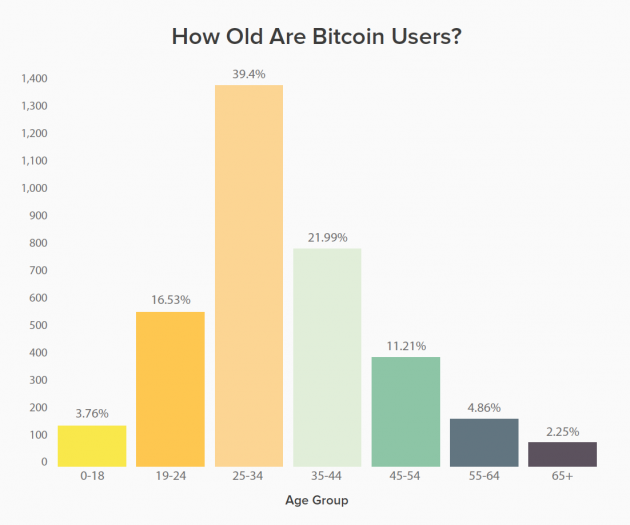They are becoming richer at a faster rate too
DON’T the rich always grow richer, while the poor well, remain poor.
If you’re already disheartened, it gets worst. The rich are getting richer, and at a faster rate too.
A 36-page report released by the Boston Consulting Group (BCG) last month showed that global personal financial wealth grew by 12% in 2017 to US$201.9 trillion.
This total, roughly 2.5 times as large as the world’s gross domestic product (GDP) for the year (US$81 trillion), more than doubled the previous year’s rate, when global wealth rose by 4%.
It also represented the strongest annual growth rate in the past five years in dollar terms.
“The main drivers were the bull market environment in all major economies, with wealth in equities and investment funds showing by far the strongest growth and the significant strengthening of most major currencies against the dollar,” said BCG in the report.
The increasing millionaires and billionaires now hold almost half of global personal wealth, up from slightly less than 45% in 2012, says BCG. In North America, which had US$86.1 trillion of total wealth, 42% of investable capital is held by people with more than US$5mil in assets. Investable assets include equities, investment funds, cash and bonds
In terms of asset classes, US$121.6 trillion (60%) of global wealth took the form of investable assets – mainly equities, investment funds, currency and deposits, and bonds, with the remaining US$80.3 trillion (40%) held in non-investable or low-liquidity assets such as life insurance, pensions funds, and equity in unquoted companies.
Residents of North America held over 40% of global personal wealth, followed by residents of Western Europe, with 22%. The strongest region of growth was Asia, which posted a 19% increase. All wealth segments grew robustly, but high growth rates were especially prevalent in the uppermost wealth segments.
The market sizing review encompasses 97 countries that collectively account for 98% of the world’s gross domestic product.
The personal wealth bands are generally measured as such:
1. Retail: below US$250,000
2. Affluent: between US$250,000 to US$1mil
3. Lower High Net Worth (HNW): between US$1mil and US$20mil
4. Upper HNW: between US$20mil and US$100mil
5. Ultra HNW: above US$100mil
Everybody is getting richer
The US is home to the largest number of people with more than US$20mil. Globally, the classes of the ultra-rich are expected to reach 671,000 by 2022.
Meanwhile, the Middle East is the region with the greatest share of wealth held in investable assets US$3.1 trillion of a total US$3.8 trillion. Western European residents held 56% in currency and deposits, while in North America the attention was on equities and investment funds, with 62% of US$47 trillion of investable wealth parked in those assets.
Should personal wealth creation continues at the rate of the past few years, BCG forecasts a compounded annual growth rate of about 7% from 2017 to 2022, in US dollar.
Events like stock market corrections and geopolitical uncertainties could knock that down to 4%.
In a worse-case scenario, such as a major economic crisis, global wealth might produce a compound growth rate of only 1% over five years, the study found.
BCG says opportunities abound for wealth managers seeking to increase their focus on different client segments.
For example, despite being far apart on the wealth spectrum, both the above US$20mil segment (upper HNW and ultra HNW) and the affluent segment are attractive because they represent very large wealth pools with high growth rates.
In 2017, the upper HNW and ultra HNW segments held more than US$26 trillion in investable wealth.
US residents held over 30% of this wealth, making the US easily the largest country of origin.
Other economic areas with large pools of ultra HNW investable assets include developing markets such as China (in second place), Hong Kong, India, Russia and Brazil, and developed markets such as Germany (in third place), France and Italy.
The share of wealth held by upper HNW and ultra HNW individuals varies widely aong the top 15 countries, ranging from 47% in Hong Kong to 8% in Japan.
Over the next five years, the upper HNW and ultra HNW segments wealth is likely to post the highest growth across all regions.
“Financial institutions looking to acquire and serve these segments will need to bring a broad international skill set to the table,” said BCG.
Affluent individuals
Afluent individuals is a segment whose population is burgeoning, hold a large and increasing amount of the world’s personal wealth at US$17.3 trillion or 14% of investable assets in 2017. (see chart)
This group of about 72 million people represents the growing middle class and many of its members will become the millionaires of tomorrow.
“We expect the wealth of this segment to post a compound annual growth rate (CAGR) of around 7% over the next five years, increasing its pool of wealth to nearly US$25 trillion. To successfully tap into this segment, wealth managers must have at their disposal an efficient service model and significant skill in and innovative digital technologies,” said BCG.
Entrepreneurs
The entrepreneur segment represents another attractive opportunity for wealth managers to tap into money in motion and provide needed services.
“We expect these individuals, who have equity in their own companies – recorded as unquoted equities (non-investable wealth) – to significantly increase their pool of investable assets, by liquidating some or all of their equity through sales and by earning new wealth through their entrepreneurial activities. The largest pools of entrepreneurial wealth are in the US, France, Italy and Japan.
Asia
Personal wealth in Asia grew by 19% to US$36.5 trillion, with residents of China holding nearly 57% of that amount, and the region registered per capita wealth of US$13,000. Although the asset allocation share of equities ad investment funds has grown over the past five years (from 22% in 2012 to 31% in 2017), Asia remains a cash-and-deposit-heavy region, with 44% of personal wealth held in this asset class. We project regional wealth to grow over the next five years at a CAGR of 12%.
Meanwhile Switzerland remains the largest offshore centre, domiciling US$2.3 trillion in personal wealth in the country. The next largest booking centres are Hong Kong (US$1.1 trillion) and Singapore (US$0.9 trillion) which have grown at yearly rates of 11% and 10% respectively – more than three times the rate (3%) of Switzerland over the past five years.
Over the next five years, BCG feels off
By Tee Lin Say, Starbiz





















